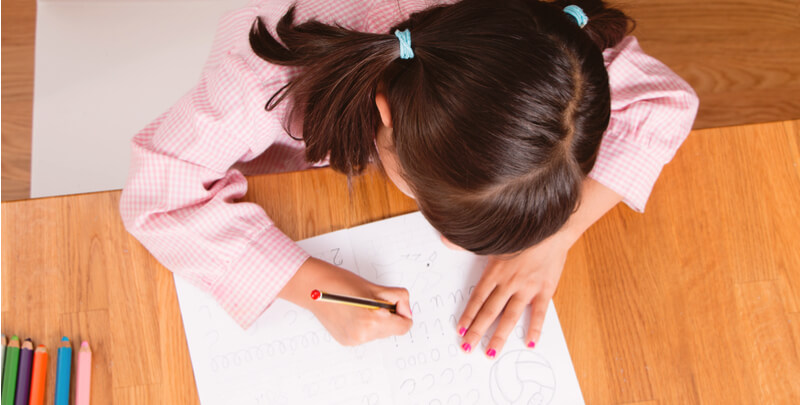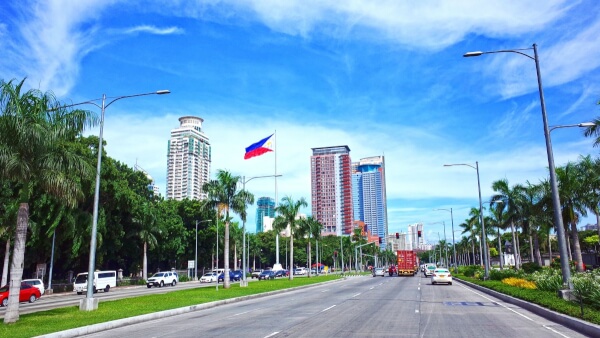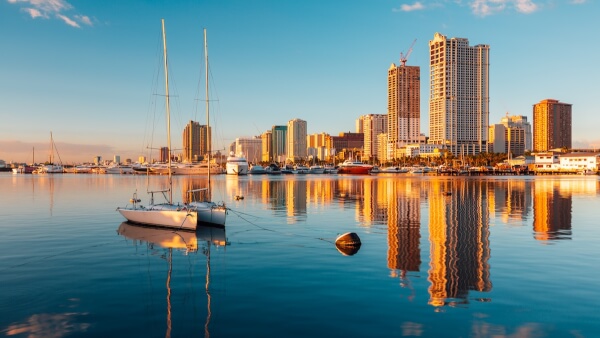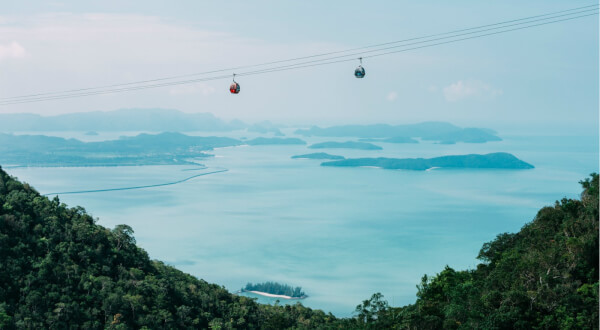Selling property in the Philippines: Taxes for Americans
What taxes do you need to pay when selling property in Philippines? Have a look at our guide to learn all about types, deadlines, and special considerations.

Living in the Philippines, the first thing you’ll notice is how friendly your neighbors are. The general mood in the island country is one of optimism and well-being, even though many people have very little in terms of material possessions.
The unique blend of influences in the Philippines has led to a seriously diverse culture with roots in Spain, Malaysia, China and the US, beyond the native Filipino culture itself. This diversity makes for a welcoming and accepting community, as well as an approach to education that borrows from each influencing country.
Today it seems that the United States has had the most significant impact on the Filipino school system, with many professionals and professors having received their education at university in the US.
While historically education in the Philippines has been plagued with high dropout and illiteracy rates, the Kindergarten Act of 2012 and the Enhanced Basic Education Act of 2014 seem to be making an impact on students. Those pieces of legislation extended the required number of years in formal education from 10 to 13, adopting the K-12 model that’s relatively standard around the world. This added a mandatory year of kindergarten and two mandatory years of senior high school, both of which were previously non-compulsory and were often not attended.
While the first group of students to experience the full 13 year mandatory education will graduate in the 2017-2018 school year, initial signs point to a seriously positive impact for the country’s students.
Whether you’re moving to the Philippines for work, to start a business or just to enjoy life on the island, it’s important to understand how the school system works in the Asian nation. This guide will provide an overview of the structure, grading, and cost of sending your children to school in the Philippines.
Since new legislation was introduced in 2012, students are required to begin school in Kindergarten, typically by age five. They are then required to continue their schooling until they graduate from grade 12, usually at age 18.
| School Type | Grades | Ages |
|---|---|---|
| Paaralang Elementarya (Primary School) | K-6 | 5-12 |
| Paaralang Sekundarya (Lower Secondary School) | 7-10 | 12-16 |
| Mataas na paaralan/ hayskul (Upper Secondary School) | 11-12 | 17-18 |
Primary school in the Philippines begins when children are five to six, and lasts for six years. This stage is mandatory for all filipino children.
Students are promoted from one grade to the next each year, assuming they meet the academic standards for each grade. There’s no final test that students must take in order to move on. Their cumulative grades from the year as a whole are calculated to determine whether they've passed.
The youngest students, in grades K-2, are typically taught in the local dialect. Which dialect that’s determined entirely by region. There are more than 170 languages spoken across the country. Students are introduced to English and Filipino as foreign languages during that time. Older children, from grade three onward, are typically taught in a mix of Filipino and English, which is one of the country’s official languages. The divide in language is usually by subject. Math and science are often taught in English, while the humanities are mostly taught in Filipino.
Primary school is broken into two cycles, both of which are usually taught within the same physical school. First children go through the primary cycle, which encompasses grades one to four and then move to the intermediate cycle, which runs from grade five to grade six.
While specific curriculum changes from grade to grade, students usually have classes in language arts (including Filipino, English and their local dialect), math, health and science. Students in the primary cycle often also take classes in civics and culture, while students in the intermediate cycle are introduced to music, art, physical education, home economics and social studies.
During primary school, students also begin to learn about makabayan, a learning area that pertains to the development of healthy personal and national identity. This is part of the country’s general push towards holistic learning, in which students are ultimately set up to learn about their own skills and values, whether cultural, vocational, aesthetic, ethical, political or economic.
Grading in primary school onward is marked as follows:
| Grade | Percentage | Description |
|---|---|---|
| A | 95-100% | Excellent |
| B+ | 89-94% | Very good |
| B | 83-88% | Very good |
| C+ | 77-82% | Good |
| C | 71-76% | Satisfactory |
| D+ | 65-70% | Satisfactory |
| D | 60-64% | Passed |
| F | < 60% | Failed |
By the time children move to secondary school, many of them leave the public school system. In fact, almost half of the country’s total high schools are private, with 21% of secondary school students in the country attending private institutions.
Among students who do continue within the public school system roughly 90% go on to attend general secondary school, with the other 10% opting instead for vocational secondary schools. There are also “Science Secondary Schools,” which are reserved for students who are determined to be particularly gifted science, technology or math by the end of their primary school career.
Students are given grades four times within the school year, and must achieve 75% or higher in each subject in order to avoid having to retake courses or being prevented to advance to the next grade. At the end of secondary school, students earn their secondary school graduation certificate.
Secondary schools are public and don’t pick their students; they’re open to all students in the direct region. Private secondary schools, however, are a completely different; they’re often highly competitive and students must do well on their entrance examination score in order to be offered a spot. Though they’re public, Science High School admission is also based on placement in entrance exams.
Overall, secondary school takes six years, spanning from grades seven to 12. Students typically graduate at age 18. While the curriculum varies grade by grade and school by school, the general subjects of math, science, social studies, civics and the language arts are continued throughout secondary school.
The school term in the Philippines typically extends from June 1st to April 1st of the following year, with a series of holidays and breaks interspersed throughout and a break between semesters.
For a complete list of holidays observed by Filipino schools, check out this comprehensive breakdown.
While public school in the Philippines is free and classes are often taught in English, many expat families choose to send their children to private school instead.
It’s typically believed that the quality of education is better at private institutions, though that quality does come with a cost. The exact fees for private school vary from school to school and region to region, however, a good baseline is about P2,000-4,000 per month (calculated by costs in Manila). Those fees can be much higher for more exclusive schools. Schools that only serve a single gender are often the most expensive, with fees can rise as high as P10,000 monthly. For families living in more rural areas, those costs might be 35-50% lower.
If you’re planning to fund your child’s education from your account back home, use Wise to get the real exchange rate and cut out expensive international bank transfer fees.
All in all, moving to the Philippines no longer means depriving your children of a quality education. Students are likely find great academic success working through 13 years of mandatory schooling, and many go on to study at any of the Philippines’ prestigious universities. If still you’re in search of more detailed information about the Filipino school system, a good place to start is the Department of Education’s website. Otherwise, enjoy the island life!
*Please see terms of use and product availability for your region or visit Wise fees and pricing for the most up to date pricing and fee information.
This publication is provided for general information purposes and does not constitute legal, tax or other professional advice from Wise Payments Limited or its subsidiaries and its affiliates, and it is not intended as a substitute for obtaining advice from a financial advisor or any other professional.
We make no representations, warranties or guarantees, whether expressed or implied, that the content in the publication is accurate, complete or up to date.

What taxes do you need to pay when selling property in Philippines? Have a look at our guide to learn all about types, deadlines, and special considerations.

Everything you need to know about international schools in Manila, Philippines.

Want to learn about property taxes in the Philippines? This guide covers types of property taxes and how they are calculated to help you navigate the process.

In this article, discover essential guidance for moving to the Philippines from the USA. Navigate visas, logistics, and cultural adjustments seamlessly.

To get you started, here’s a beginners guide to the laws concerning dual citizenship in the Philippines.

When you’re expecting a newborn, life can be both wonderful and stressful at the same time. This is especially true if you’re on leave as a foreigner or...